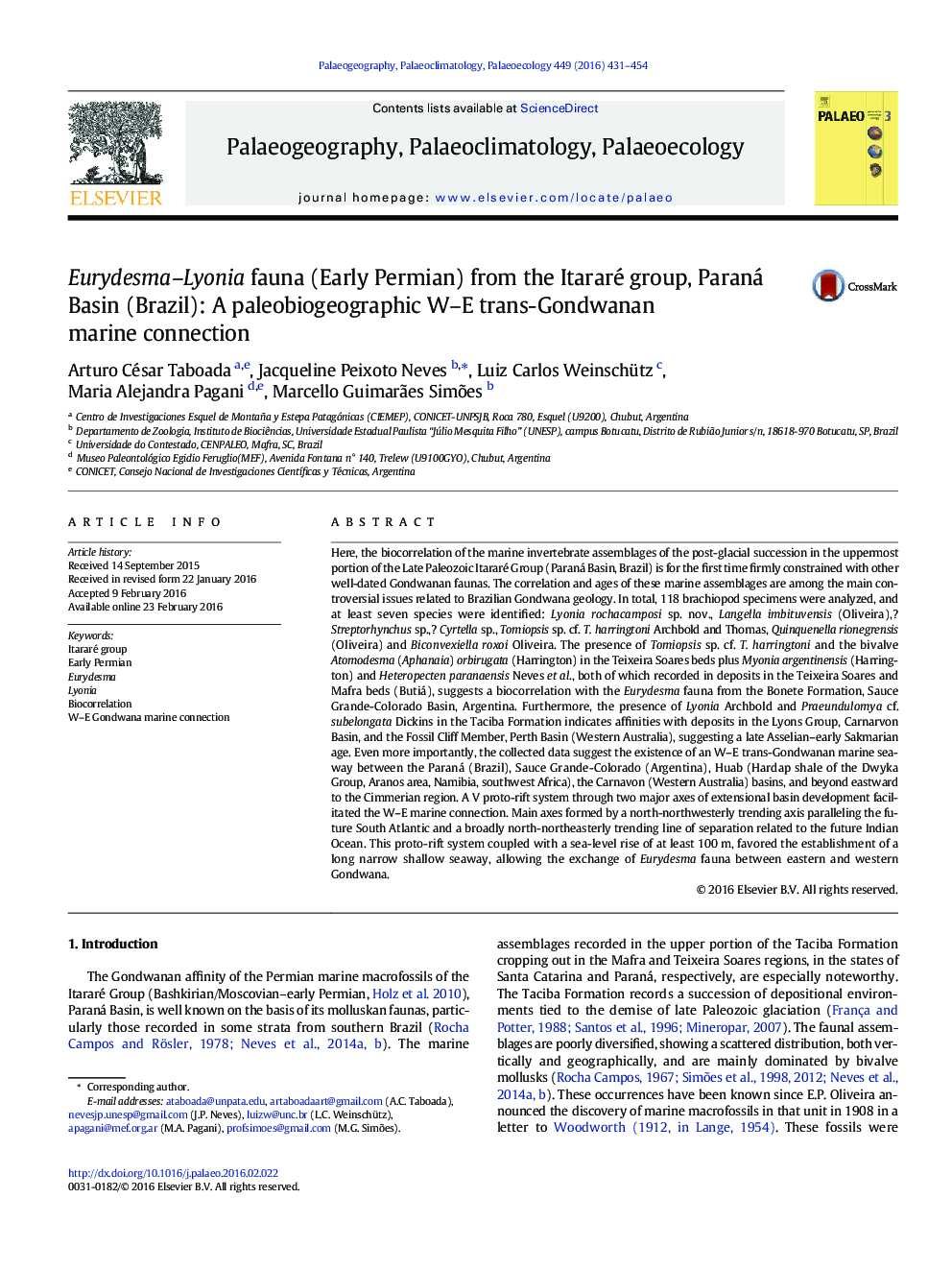| Article ID | Journal | Published Year | Pages | File Type |
|---|---|---|---|---|
| 4465777 | Palaeogeography, Palaeoclimatology, Palaeoecology | 2016 | 24 Pages |
•New brachiopod records from the post-glacial Early Permian Itararé succession, South America•New bivalve-brachiopod association assemblage to recognize a regional stratigraphic interval in the Eurydesma Biozone•Existence of a transient W–E trans-Gondwanan seaway among Paraná, Sauce Grande-Colorado, South African, Indian, western Australia and Cimmerian basins
Here, the biocorrelation of the marine invertebrate assemblages of the post-glacial succession in the uppermost portion of the Late Paleozoic Itararé Group (Paraná Basin, Brazil) is for the first time firmly constrained with other well-dated Gondwanan faunas. The correlation and ages of these marine assemblages are among the main controversial issues related to Brazilian Gondwana geology. In total, 118 brachiopod specimens were analyzed, and at least seven species were identified: Lyonia rochacamposi sp. nov., Langella imbituvensis (Oliveira),? Streptorhynchus sp.,? Cyrtella sp., Tomiopsis sp. cf. T. harringtoni Archbold and Thomas, Quinquenella rionegrensis (Oliveira) and Biconvexiella roxoi Oliveira. The presence of Tomiopsis sp. cf. T. harringtoni and the bivalve Atomodesma (Aphanaia) orbirugata (Harrington) in the Teixeira Soares beds plus Myonia argentinensis (Harrington) and Heteropecten paranaensis Neves et al., both of which recorded in deposits in the Teixeira Soares and Mafra beds (Butiá), suggests a biocorrelation with the Eurydesma fauna from the Bonete Formation, Sauce Grande-Colorado Basin, Argentina. Furthermore, the presence of Lyonia Archbold and Praeundulomya cf. subelongata Dickins in the Taciba Formation indicates affinities with deposits in the Lyons Group, Carnarvon Basin, and the Fossil Cliff Member, Perth Basin (Western Australia), suggesting a late Asselian–early Sakmarian age. Even more importantly, the collected data suggest the existence of an W–E trans-Gondwanan marine seaway between the Paraná (Brazil), Sauce Grande-Colorado (Argentina), Huab (Hardap shale of the Dwyka Group, Aranos area, Namibia, southwest Africa), the Carnavon (Western Australia) basins, and beyond eastward to the Cimmerian region. A V proto-rift system through two major axes of extensional basin development facilitated the W–E marine connection. Main axes formed by a north-northwesterly trending axis paralleling the future South Atlantic and a broadly north-northeasterly trending line of separation related to the future Indian Ocean. This proto-rift system coupled with a sea-level rise of at least 100 m, favored the establishment of a long narrow shallow seaway, allowing the exchange of Eurydesma fauna between eastern and western Gondwana.
Graphical abstractFigure optionsDownload full-size imageDownload high-quality image (191 K)Download as PowerPoint slide
